Should you use the .22 Hornet for small game and varmint hunting?
I think you’ll agree with me that, at first glance anyway, it makes a whole lot more sense to use more modern cartridges like the .223 Remington or the .220 Swift instead of the .22 Hornet for small game and varmint hunting. After all, those newer cartridges shoot heaver bullets at a higher velocity, which translates into more kinetic energy, flatter trajectories, and better downrange performance.
However, even though the cartridge has been around for almost a century, and even though it can’t come anywhere close to the performance of those newer cartridges on paper, the .22 Hornet is still a very useful varmint hunting cartridge.
In today’s post I’m going to show you why the .22 Hornet is so versatile and exactly why you should consider hunting with it.
Table of Contents
Note: some of the links below are affiliate links. This means I will earn a small commission (at no extra cost to you) if you make a purchase. This helps support the blog and allows me to continue to create free content that’s useful to hunters like yourself. Thanks for your support.
Additionally, I recorded an entire podcast episode on this exact subject. If you’d rather listen than read, click the appropriate link below to listen to this episode on your preferred podcasting service.
22 Hornet Podcast
Apple | Google | iHeart | Pandora | Spotify
.22 Hornet History
First, I recorded an entire video episode on this exact subject. If you’d rather listen or watch than read, watch the YouTube video below.
Like with many older cartridges, the exact origins of the .22 Hornet are a little hazy. That being said, Grosvenor Wotkyns is generally credited for developing it using the black powder .22 Winchester Centerfire (WCF) cartridge for inspiration in the 1920s. Intrigued by the new cartridge, Townsend Whelen tested it out a few years later in a modified Springfield rifle.
To put it mildly, Whelen was impressed with the performance of the .22 Hornet.
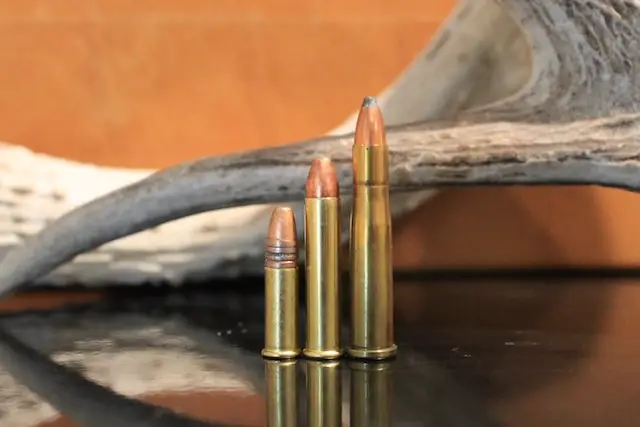
First off, the early .22 Hornet load he tested of a 45 grain soft point bullet at about 2,400 feet per second had a no real peer at the time. Since it was the first small-bore, high velocity cartridge designed for small game and varmint hunting, the .22 Hornet was truly an innovative development. Additionally, the cartridge had a very light recoil and a mild report that made it a true joy to shoot, especially when those early loads had such impressive performance for that time period.
Finally, the cartridge was extremely accurate. Some accounts from that time period state that the .22 Hornet was the most accurate centerfire cartridge the technicians at Winchester had ever encountered up until that point. Considering that Whelen is known for his quote “Only accurate rifles are interesting”, he must have found the .22 Hornet quite fascinating indeed.
Whelen was not the only person impressed with the cartridge and it started to catch on with the hunting community.
However, widespread adoption of the .22 Hornet was hampered initially by the fact that no company produced rifles for the cartridge during the first few years it existed. For that reason, shooters during the early days of the Hornet primarily used customized rifles like the bolt-action Springfield Model 1922 or the single shot Martini Cadet.
Since most of those rifles were converted from the rimfire .22 Long Rifle cartridge, they had a .223″ groove diameter (more on this in a minute).
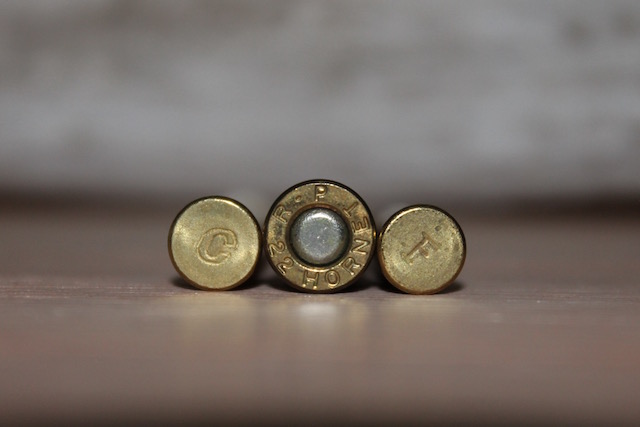
However, after Winchester Model 54 rifles chambered in .22 Hornet went into large scale production in 1933, the cartridge really made it into mainstream use. Other companies soon began producing bolt-action and single shot rifles for the cartridge to keep up with exploding demand. Indeed, the .22 Hornet was the third most produced caliber (behind only the .30-06 Springfield and .270 Winchester) in pre-World War II Winchester Model 70s, which should give you an idea how popular the cartridge was with American hunters in the 1930s and early 1940s.
The .22 Hornet was also widely adopted in Europe where it’s known as the 5.6x35mm. In addition to bolt-action and single shot rifles, European gun makers have produced a number of combination guns chambered in the cartridge as well.
After World War II, the .22 Hornet started to decline in popularity for a couple different reasons though.
For one thing, major U.S. gun manufacturers started producing the rifle with a .224″ diameter groove in line with the other centerfire .22 caliber cartridges in production. Obviously, changing bore diameter of a cartridge already in mass production can present some challenges. The introduction of the high velocity .222 and .223 Remington cartridges in the 1950s and 1960s also stole some of the varmint hunting market share away from the .22 Hornet.
Through all of that, the .22 Hornet has refused to die and is still hanging around to this day as a relatively popular varmint cartridge. Even though it doesn’t compare favorably on paper to many more modern cartridges, there is no denying that the .22 Hornet has quite the appeal to varmint hunters looking for an accurate cartridge with a tame recoil and a mild report.
.22 Hornet Ammo
While the .22 Hornet is not as popular as it used to be, it’s still not difficult to find factory loaded .22 Hornet ammo at gun stores all over the world. For instance, Federal, Hornady, Nosler, Prvi Partizan, Remington, Sellier & Bellot, and Winchester all manufacture at least one .22 Hornet load.
Most of the older .22 Hornet rifles (like the Winchester Model 54 and 70) have a relatively slow rifling twist rate of 1:16 inches. This means the bullet makes one full revolution every 16″ as it travels down the barrel. For comparison, it’s not uncommon to see 1:9 or even a 1:7 rifling in an AR-15. Newer .22 Hornet rifles (like the Ruger 77/22) have a 1:14 twist rate.
Since they have a slower rifling twist, those older rifles quite often have trouble stabilizing bullets heavier than 45 grains. For that reason, the 45 grain bullets are the most common and 35 grain bullets are a close second in popularity. If you want to use heavier 50gr and 55gr bullets, then you’ll probably need to handload.
Due to advances in propellants, modern factory-loaded .22 Hornet ammo has slightly improved ballistics compared to the original loads from the 1920s and 1930s. Exact performance varies depending on barrel length, but for instance, Hornady advertises a muzzle velocity of 3,100 feet per second for their 35gr Varmint Express ammunition and 2,665 feet per second for their 45gr Interlock ammo.
BUY SOME GREAT 22 HORNET HUNTING AMMO HERE
It’s also possible to improve upon the performance of the .22 Hornet by handloading. Consult a reputable handloading manual for details, but the cartridge seems to really like Hodgdon’s Lil’Gun and H110 powder.
Though the details are beyond the scope of this article, wildcatters also developed an “improved” cartridge known as the .22 K-Hornet with a larger case capacity. Built by fireforming the case in a different chamber, the .22 K-Hornet has a sharper shoulder that can accommodate more powder. As a result, it shoots at a slightly higher velocity than the original cartridge.
Firearms In .22 Hornet
If you’re looking for a nice .22 hornet rifle, then you have a lot of options. The Ruger M77/22, the Savage 25 Lightweight Varminter, and the Thompson/Center Contender are all in current production and are available in .22 Hornet.
Among other models, the Browning A-Bolt Micro Hunter, the Browning Model 1885 Low Wall, the CZ Model 527, the New England Handi-Rifle, the Ruger No. 1, the Savage Model 40, the Winchester Model 43, Winchester Model 54, and the Winchester Model 70 were all produced in .22 Hornet at some point over the years.
BUY A NICE 22 HORNET RIFLE HERE
As an interesting aside, the US military also issued a couple of different .22 Hornet rifles as survival gear during the 1940s through the 1970s. These rifles were intended to assist the downed crew in hunting for food, not for self-defense against enemy troops.
The M4 Survival Rifle was a rudimentary bolt-action rifle chambered in the cartridge used by the Air Force in the 1940s. It was eventually replaced by the M6 Aircrew Survival Weapon, which was a double barreled combination gun chambered in .410 bore and either .22 Long Rifle or .22 Hornet. Springfield Armory sold a replica of the M6 for several years known commercially as the Springfield Armory M6 Scout and there are still a few of those guns floating around out there.
Hunting With The .22 Hornet
One of the reasons why the .22 Hornet first became so popular was because it was so darn effective on small game and varmints like foxes, bobcats, and coyotes at short to moderate range. When the cartridge was first designed, scopes were nowhere near as common as they are now, so the vast majority of hunters using the .22 Hornet in those early years were shooting with iron sights. With a maximum effective range of around 200 yards, the cartridge allowed hunters to hit small targets out about as far as was realistically possible for most people with iron sights.
Since it had very flat trajectory and a well-deserved reputation for accuracy, the .22 Hornet performed marvelously in that role and also had the added bonus of keeping recoil to an absolute minimum. There’s no telling how many coyotes, foxes, and bobcats hunters have taken with the .22 Hornet over the years.
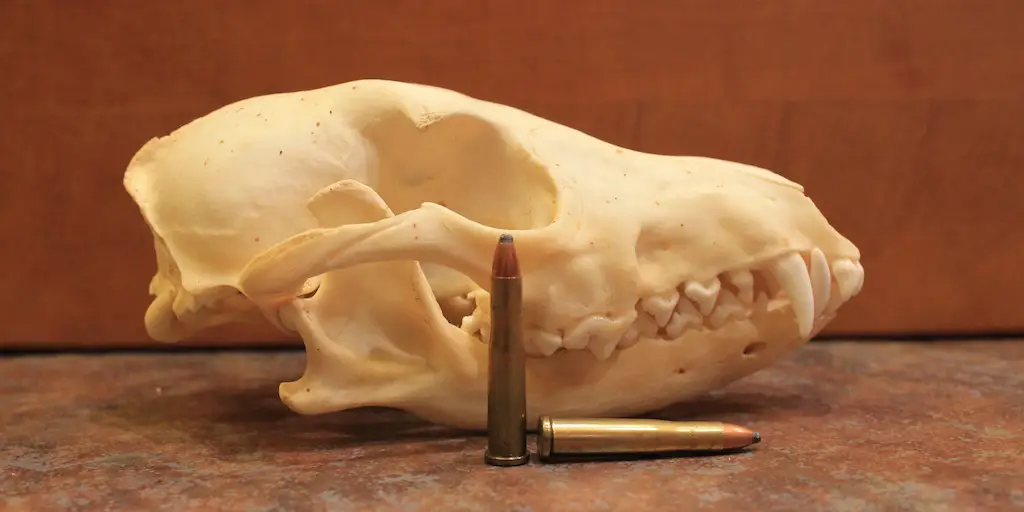
The .22 Hornet is still great for varmints and small game out to 200 yards and the light report of the cartridge also makes it easier on the ears than louder cartridges like the .220 Swift or .223 Remington. The lighter and slower .22 Hornet bullets are also less likely to ricochet. These characteristics make the .22 Hornet a better choice for pest control in populated areas than those cartridges.
22LR vs 22WMR vs 22 Hornet vs 223 Remington
In terms of performance, the .22 Hornet is significantly more powerful than the rimfires like the .17 HMR, the .22 Long Rifle and the .22 Winchester Magnum Rimfire (WMR), but is clearly in a tier below other .22 caliber centerfires like the .219 Zipper and .223 Remington.
You can see this pretty clearly in the table below comparing Federal’s 36gr copper plated hollow point .22 Long Rifle, CCI 40gr Game Point .22 Magnum, Hornady 36gr V-Max .22 Hornet, and Winchester 55gr Varmint X .223 Remington ammunition.
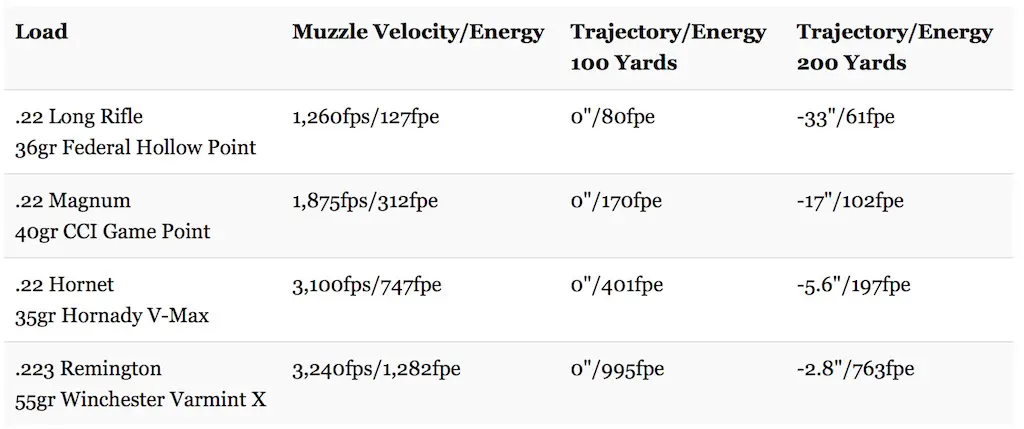
Yes, the .223 Remington is clearly a more powerful cartridge than the .22 Hornet. Similar to the 10mm vs .45 ACP debate, the .223 Remington has more energy remaining at 200 yards than many .22 Hornet loads have at the muzzle.
However, the body of evidence also indicates that both cartridges are very effective on predators, small game, and varmints. So, the biggest advantage the .223 Remington has lies in its higher velocity and flatter trajectory that make it easier to hit targets at longer range.
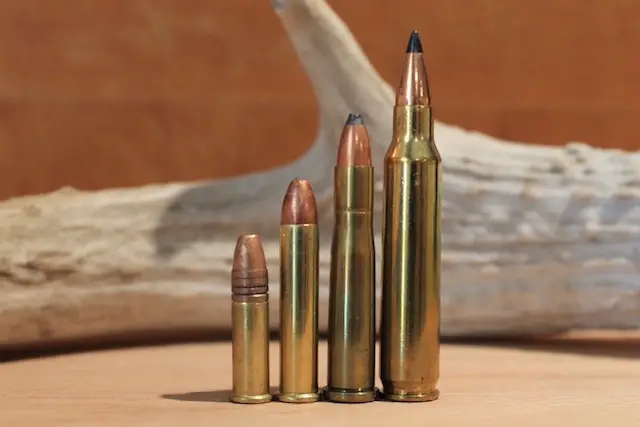
Deer Hunting With The .22 Hornet
Using the cartridge for deer hunting is a somewhat controversial subject. For one thing, it’s not legal in some states. However, assuming it’s legal to use on deer where you live, I still tend to agree with Mel Tappan’s assessment of the .22 hornet for deer hunting in his book Survival Guns (p90-91):
It is by no means a reliable deer cartridge, even with handloads, although it has been used for that purpose.
Is it possible to kill a deer with a .22 Hornet?
Absolutely.
In fact, my grandfather killed his first deer with a Winchester Model 43 in .22 Hornet many years ago. Unfortunately, his experience pretty well sums up the two scenarios most likely to play out if you shoot a big game animal with the diminutive cartridge.
He initially shot the buck in the shoulder and caused a nasty, but probably not immediately fatal wound. The deer stopped, turned and looked at him for a few seconds. Fortunately, my grandfather had time to reload and shot the deer again. This time, he shot it in the head and the deer dropped in its tracks.
My grandfather told me that he always regretted shooting the deer with that cartridge. While he ended up killing probably hundreds of coyotes and other varmints with that Winchester Model 43, he never took it deer hunting again.
He learned the hard way that those small, lightly constructed bullets quite often won’t penetrate far enough to reach the vitals on a body shot. However, they will really do a number on a deer, feral hog, or other big game animal (like an impala, springbok, or warthog) if you hit them in the neck or the head.
Only take that shot if you really know what you’re doing though, because it’s easy to screw up.
Best .22 Hornet Ammo For Hunting
The big ammunition manufacturers produce multiple varieties of .22 Hornet ammo specifically designed for hunting predators and varmints.
Learn more about some of the various 22 Hornet ammunition options at the link below.
Best 22 Hornet Ammo For Hunting Varmints, Predators, & Deer
Final Thoughts On The .22 Hornet
If you do a lot of long range varmint hunting, or just really like high velocity cartridges, then you should look into getting something like a .22-250 Remington or a .220 Swift because the .22 Hornet probably isn’t for you. On the other hand, if you do most of your varmint hunting inside 200 yards and want a sweet shooting cartridge with minimal recoil and muzzle blast, then the .22 Hornet is tough to beat.
For a detailed discussion about another high velocity .22 caliber cartridge in the .224 Valkyrie, read the article below:
224 Valkyrie: Should You Buy One?
The Lyman 50th Edition (p126-126) and Hornady 10th Edition (p139-142) reloading manuals and The .22 Hornet by Layne Simpson in Shooting Times were used as references for this article.
Enjoy this article on the .22 Hornet? Please share it with your friends on Facebook and Twitter.
Make sure you subscribe to The Big Game Hunting Podcast and follow The Big Game Hunting Blog on Facebook, Instagram, Twitter, and YouTube
NEXT: BEST 6.5 CREEDMOOR AMMO FOR HUNTING ELK, DEER, & OTHER BIG GAME
John McAdams is a proficient blogger, experienced shooter, and long time hunter who has pursued big game in 8 different countries on 3 separate continents. John graduated from the United States Military Academy at West Point and is a veteran of combat tours with the US Army in Iraq & Afghanistan. In addition to founding and writing for The Big Game Hunting Blog, John has written for outdoor publications like Bear Hunting Magazine, The Texas State Rifle Association newsletter, Texas Wildlife Magazine, & Wide Open Spaces. Learn more about John here, read some of John’s most popular articles, and be sure to subscribe to his show: the Big Game Hunting Podcast.


I’m hunting with lead free reloads in .22 Hornet, here in California. Lil’Gun now has published data for the 45 grain TSX Barnes copper monolith bullet, “just sayin”.
Oh wow, that’s a great development! Thanks for sharing!
John
I grew up in Africa Zimbabwe on a large farm 90% of my hunting was done with a brno 22 hornet any thing up to deer sized game fell to its tiny bullet all kneck or head shots. I am saveing my pennies for a replacement to us here in the states. It is a great round but only if you place your shots well. Body shots on deer with this round dont work out well.
Thanks for your comment Bruce! Glad you enjoyed the article.
John
As all of the big farms seem to be falling victim to developers my Browning B78 high wall in 22-250 gets more “safe time” and my Browning 1885 low wall in 22 Hornet seems to get more field time. Maybe the Hornet is coming back into it’s own. Ninety percent of the time it is more than adequate.
I agree 100%! I also like your taste in rifles!
Thanks for your comment,
John
i have owned 2 hornets a bruno fox and a zastavia agree not suitable for red deer in new zealand excelent for goats and wallabys a mate of mine said his grandfather shot hundreds of deer in new zealand with a 22 hornet.In the north island most of the hunting is in heavy bush at close range i have been told the hornet was called the poachers rifle in england .Thank you for good article
Thanks for your comment Geoff. Glad you enjoyed it!
John
Have shot many pigs in Hawaii with the 22 Hornet with the quiet report and mild recoil even daughters like shooting it. The. 77/22 hornet has proven deadly on the porkers, have had every one drop on the spot and largest was about 125#.
In a rural setting w e found the mild report not obtrusive to the locals, what is not to like with this old tried and trusted cartridge.
Bud